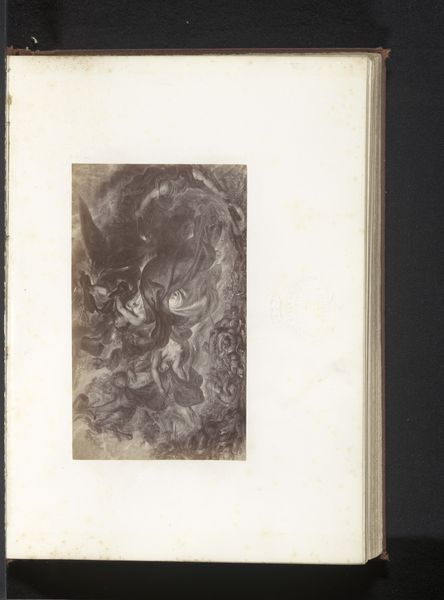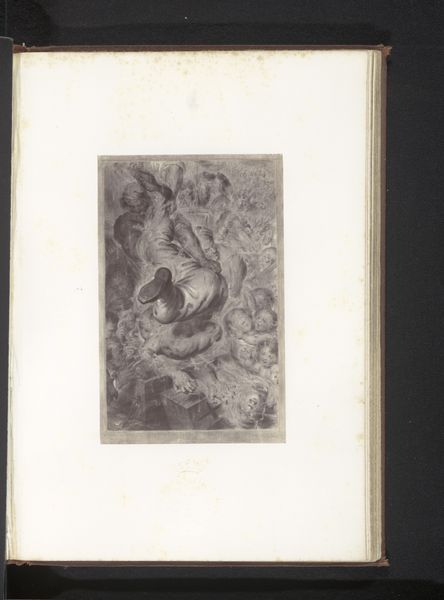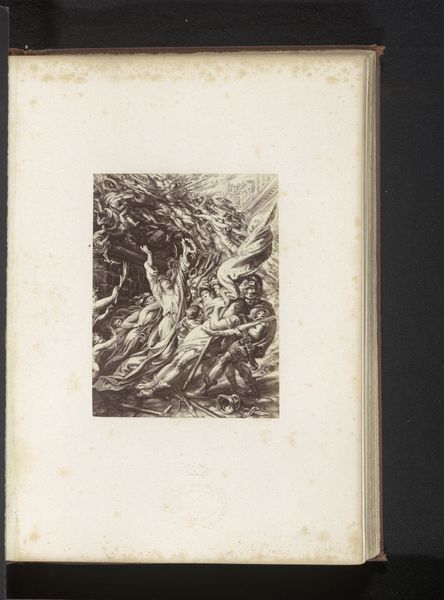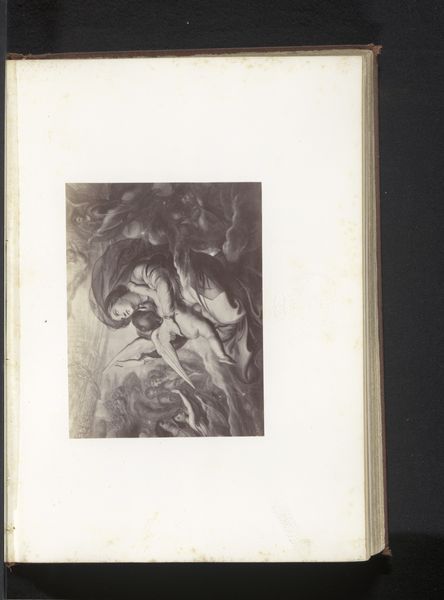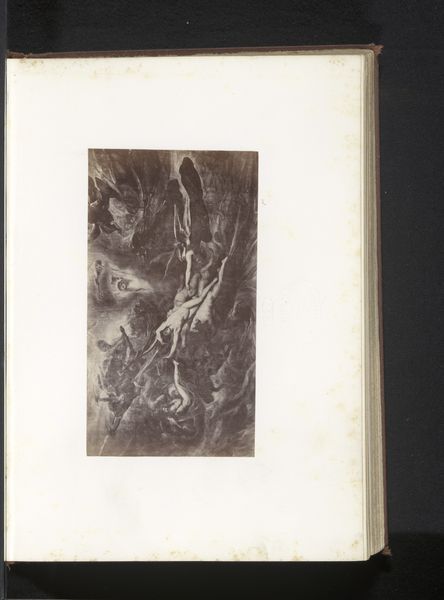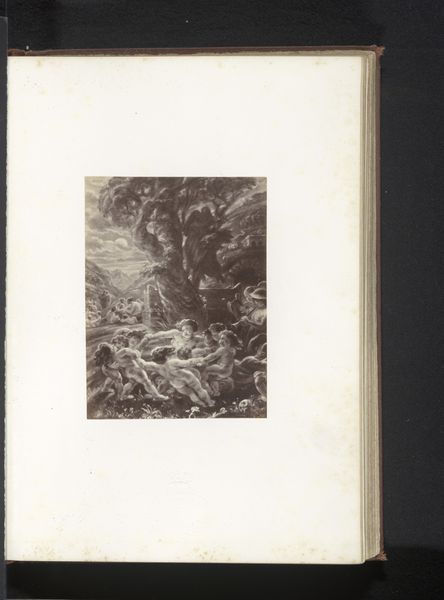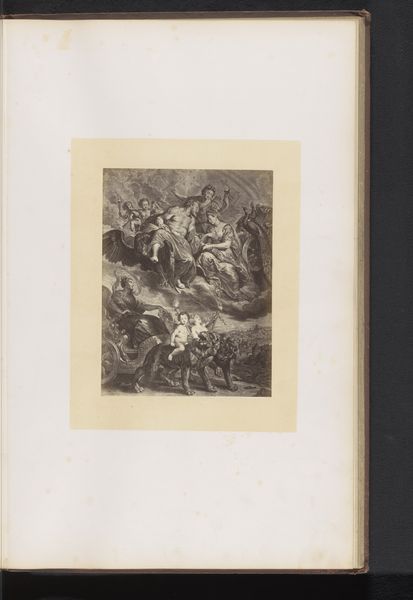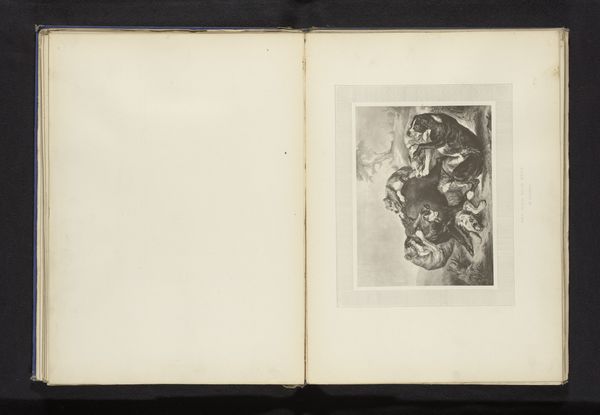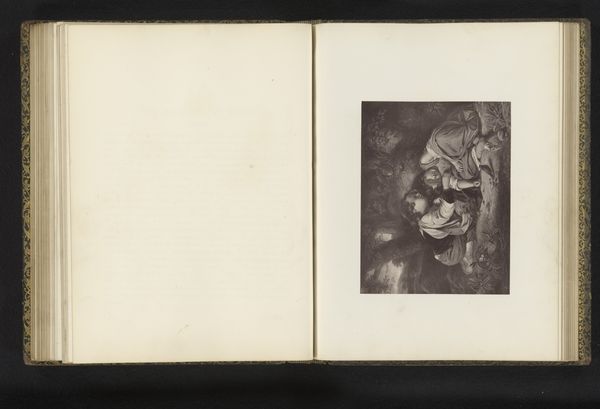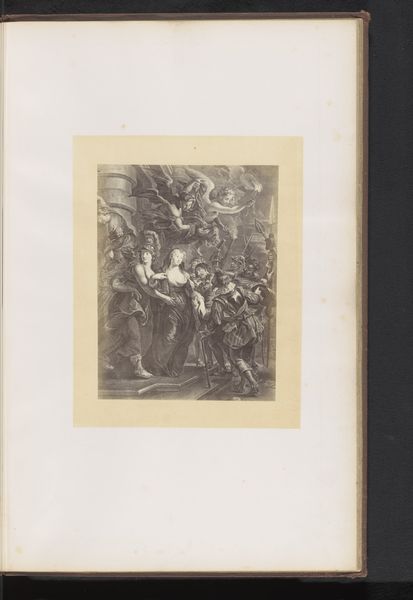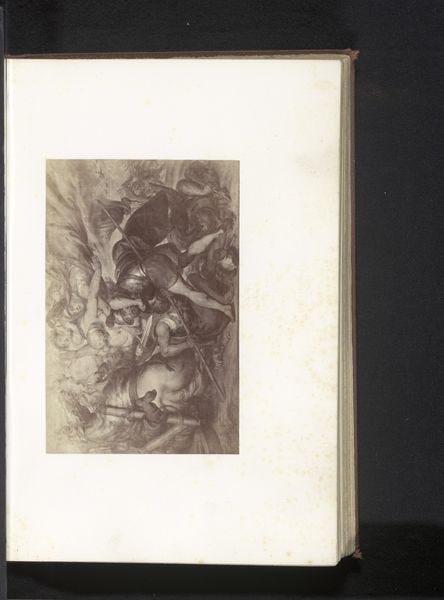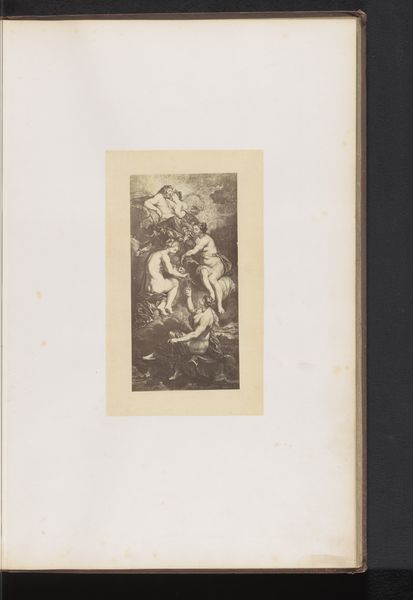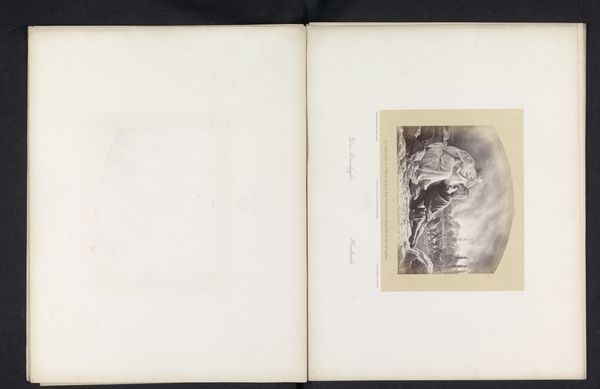
print, photography, gelatin-silver-print
# print
#
photography
#
gelatin-silver-print
#
history-painting
#
academic-art
Dimensions: height 118 mm, width 161 mm
Copyright: Rijks Museum: Open Domain
Edmond Fierlants captured this photograph of Antoine Wiertz's "The Forge of Vulcan" in the 19th century. It depicts Vulcan, the Roman god of fire, laboring in his fiery workshop, surrounded by cyclopes. Here, fire is a symbol of creative and destructive power, a motif tracing back to ancient myths. Consider how this scene echoes in other depictions across time. The image of the divine craftsman toiling amid flames reverberates even in religious art, where blacksmiths symbolize transformative power. Think of the alchemist in his laboratory, striving to transmute base metals into gold—a metaphor for spiritual purification. The psychological impact of fire is profound. It conjures primal memories of warmth and security but also of danger and destruction. This duality engages our subconscious, reminding us of the delicate balance between creation and annihilation, a cycle ever present in the human experience. Through Fierlants' lens, Wiertz's vision of Vulcan becomes a potent symbol, resurfacing throughout art history, continually reshaped by the collective memory and cultural context.
Comments
No comments
Be the first to comment and join the conversation on the ultimate creative platform.
